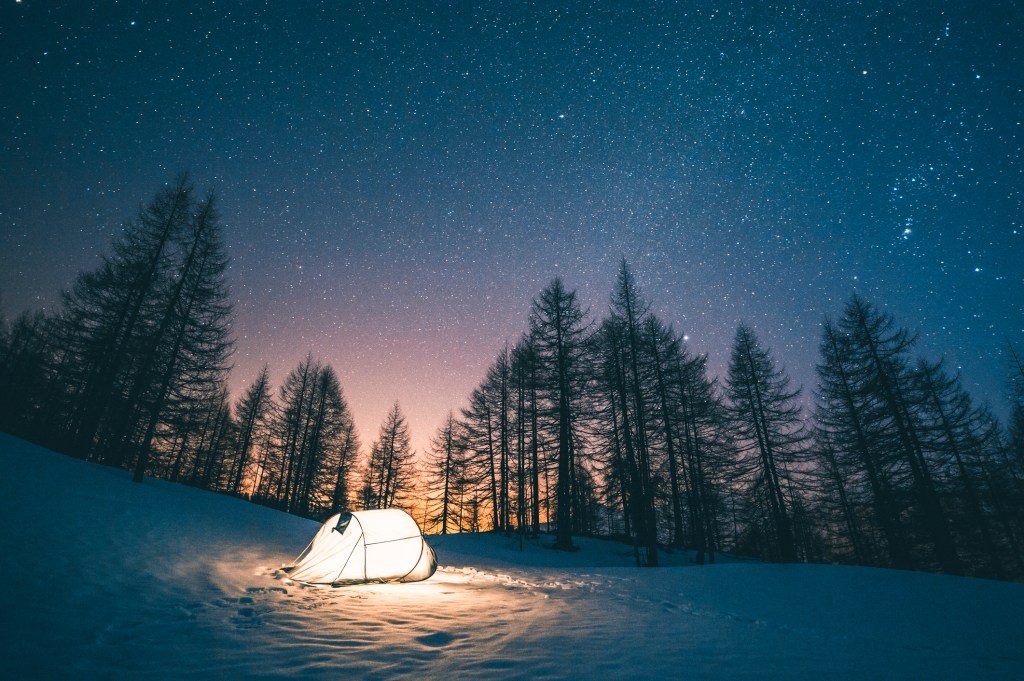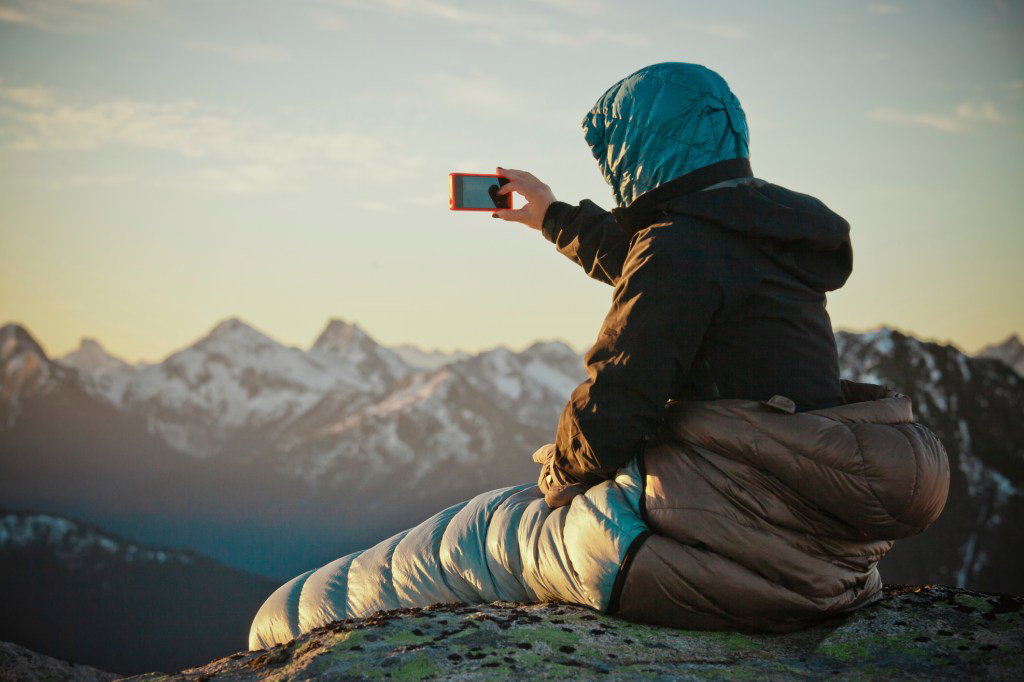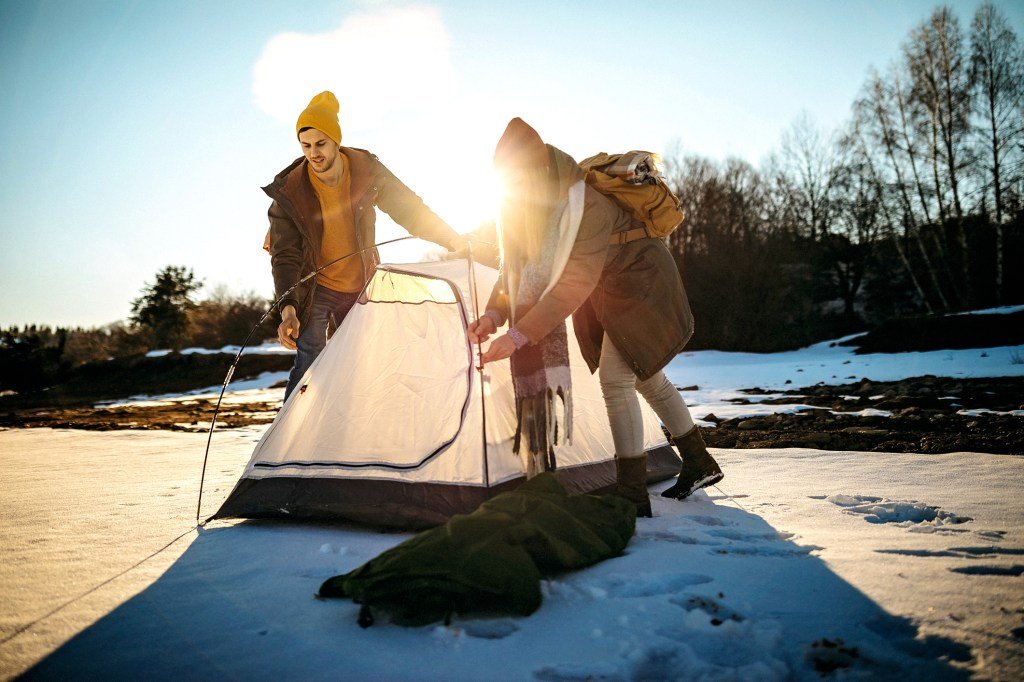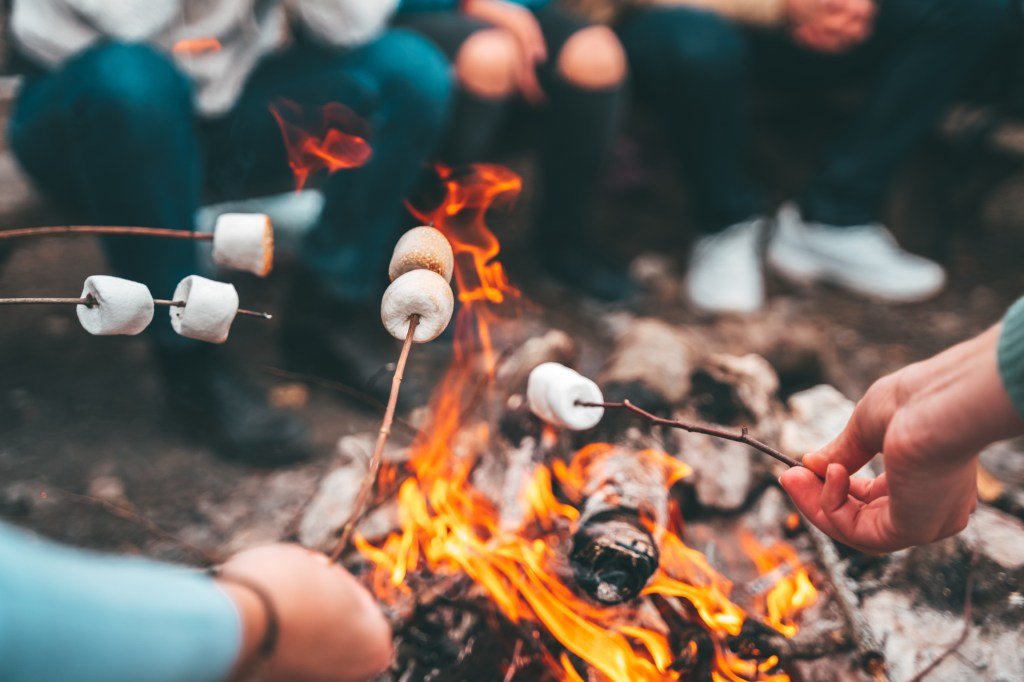

Camping in the cold makes for a very cozy campfire—but it’s not so nice once the fire is out and it’s time to go to sleep. Whether it’s full-blown winter or you’re camping in shoulder season at altitude, if you don’t set up your tent properly to keep your heat in and the cold out, you’ll be shivering under the stars instead of sleeping.
Luckily, all it takes to make a cold night more comfortable is setting up camp correctly from the start. Small adjustments, like adding layers under your tent and more insulation overhead, can go a long way to creating a toasty tent to sleep in.
Here are eight tricks to keep your tent warm at night.
Choose your campsite wisely
If you set up camp in an exposed, wind-blown area; by the water; or at the bottom of a valley where cold air settles, you’re making the job of staying warm that much harder. Instead, choose a site that’s protected from the wind and away from the water’s edge.

Upgrade your ground insulation
While we often think about staying warm via adding layers on top, you actually lose a ton of your body heat by having the cold ground leech it from your body. That’s why sleeping pads are a crucial part of your warm sleep set-up—they create a barrier between your body heat and the ground.
Also helpful, is taking one extra step when you set up your tent ahead of a cold night: Put some kind of layer between your tent and the earth. Typically this is your tent’s footprint or a tarp, but if you have neither, make a bed of leaves and pine branches before placing your tent on top.
Use an insulated sleeping pad and bag
Ditch the camp cot—it allows too much airflow beneath you without the benefit of insulation—and the air mattress, which maintains the temperature of the outside air as it was blown into the chamber. Instead, use a sleeping pad—ideally an insulated sleeping pad, which has layers of material inside to keep you snug as a bug.

You definitely want a sleeping bag rated at the lowest temperature possible. If your sleeping bag is a two- or three-season bag, you can also add warmth inside it by using a thermal sleeping bag liner.
Layer up
If you’re still cold in your winter set-up, or you don’t have an insulated sleeping pad, you can add more heat preservation by layering blankets under and over your sleeping bag to lock warmth inside. You can put one under your sleeping pad too.
Also, make sure you’re wearing the right layers to bed. The idea that your body retains more heat when you’re naked inside a sleeping bag is false — instead, you want to layer with fabrics that are breathable but also preserve body heat, like merino wool. And be sure you change out of your daytime layers for bed—sweaty clothes from your adventures outside will have moisture in the fabric, which will make you feel colder at night.
Lastly, make sure your layer plan includes a warm hat and possibly a warm face covering.
Add layers on top of your tent
Tents are crafted from materials with ideal breathability and airflow—which means if you want to keep heat in, you’ll need to add another layer overtop for insulation. Putting your rain fly over your tent even when the skies are clear will help retain heat inside your tent. Better yet: Add a full-size tarp overtop to trap heat even more efficiently.

Keep in mind you do want a little ventilation to control moisture, since that can make you feel even colder. Typically, if you stake a rain fly or tarp out from the tent itself, this will allow a small sliver of airflow to pull moisture out from your shelter.
To retain even more heat, you can also add thick or warm layers in between your tent and the tarp—foam pads, newspaper, or even emergency space blankets will all help.
Put a hot water bottle in your sleeping bag
Bringing a hot water bottle to bed with you can help you stave off the shivers as you build heat inside your sleeping bag after coming in from the cold outside. Boil water and fill up a hot water bottle or, in a pinch, fill up a Nalgene. Then, drop it at the bottom of your sleeping bag for toasty toes.
Eat a snack before bed
Your body uses more energy to keep itself warm when it’s cold outside. Eating a snack before bed delivers energy to help with this in the form of calories. Whether it’s having an extra hot dog at dinner or downing a granola bar before you snuggle into your layers, add some extra energy to your body before a cold night ahead.

Use a portable heater
We view running a portable heater inside your tent as a last resort because it comes with serious risks and downsides: Portable gas heaters can warm you up, but it’s very, very important to have proper ventilation when running these to avoid carbon monoxide poisoning. Electric fan heaters are a much safer option, but they require you to be at a powered site and have an extension cord.











I have hung a candle lantern in the middle of my tent. Make sure it hangs away from the sides of the tent.